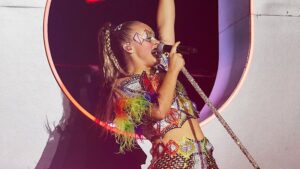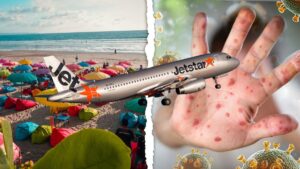
Egg whites may be the staple of a health-conscious breakfast, but it is the egg yolks that have unlocked a groundbreaking advancement in stem cell research. A team led by USC Stem Cell has successfully derived and maintained authentic embryonic stem cells (ESCs) from chickens and seven other bird species using egg yolk as a key component. This development, published today in Nature Biotechnology, holds vast potential for applications ranging from studying embryonic development to reviving endangered or extinct bird species.
“A true embryonic stem cell has two key qualities: it is self-renewing and can multiply to produce more stem cells; and it is pluripotent, meaning it can differentiate into all cell types of the embryo—both in a culture dish and after being reintroduced into an embryo,” explained Qi-Long Ying, PhD, a professor of stem cell biology and regenerative medicine at the Keck School of Medicine of USC. “In this study, we successfully derived and maintained true self-renewing and pluripotent ESCs from chicken, quail, pheasant, turkey, duck, goose, peafowl, and ostrich.”
Revolutionizing Avian Stem Cell Research
The study represents a significant leap in avian stem cell research. First author Xi Chen, now at Caltech, spent a decade advancing this research, initially during his PhD and postdoctoral training in the Ying Lab at USC, and later while continuing the work in Carlos Lois’s lab at Caltech. This project builds on previous research from Ying’s lab, which independently derived the first true ESCs from rats, a milestone published in Cell in 2008.
In the current study, Chen and his collaborators optimized conditions to support ESCs from chickens, the most well-studied avian species. Starting with cells from the blastoderm stage, they added two chemicals known to encourage ESC formation by inhibiting signals that promote stem cell differentiation. However, it was the addition of egg yolk that proved to be the game-changer.
The Role of Egg Yolk in Stem Cell Cultivation
When the blastoderm cells were transferred from their eggs along with larger amounts of yolk, they exhibited improved self-renewal in the lab. The scientists discovered that a protein in the yolk, ovotransferrin, was the missing ingredient in their ESC-promoting cocktail. This discovery enabled them to derive and maintain ESCs from several chicken breeds.
Surprisingly, the same three-ingredient cocktail did not work for other avian species. For instance, pheasant, duck, and turkey ESCs required an additional chemical, SB431542, to maintain stem cell identity. Quail, geese, and peafowl needed all four components plus a fifth ingredient, the pluripotency-related signaling protein LIF derived from chickens. Ostrich ESCs, however, thrived without the chicken LIF, reverting to a four-ingredient version.
Implications and Future Applications
Under optimized conditions, chicken ESCs could form the three primary cell layers of the early embryo, a hallmark of true pluripotency. They could also differentiate into reproductive germ cells and non-reproductive somatic cells. Chicken ESCs passed the gold standard test for pluripotency: the ability to make a chimera, an animal composed of cells from two genetically distinct individuals.
ESCs from other species also passed key tests of pluripotency. Quail, goose, and ostrich ESCs displayed classic pluripotency-associated genetic markers. Importantly, the lab of co-author Professor Guojun Sheng at Kumamoto University in Japan independently derived chimera-competent chicken and peafowl ESCs using the methods described in this study, proving the approach’s robustness and reproducibility.
“By demonstrating that we can derive and maintain authentic ESCs from several avian species, this research opens up so many possibilities,” said Ying. “We can imagine engineering healthier chickens for the poultry industry, incubating therapeutic proteins inside eggs for pharmaceutical development, or reviving endangered or extinct species to support conservation and biodiversity efforts.”
Looking Ahead
This research not only paves the way for significant advancements in avian biology but also offers promising avenues for biotechnology and conservation efforts. As the team continues to expand their ability to derive avian ESCs, the potential applications of this technology are vast and varied.
The study was supported by a range of grants and funding sources, including the Revive & Restore Biotechnology for Bird Conservation grants and federal funding from the National Institutes of Health. The work also received support from various foundations and research funds, highlighting the collaborative effort behind this groundbreaking discovery.
As the scientific community continues to explore the possibilities of avian ESCs, this study stands as a testament to the innovative spirit and dedication of researchers striving to push the boundaries of what is possible in stem cell research.






